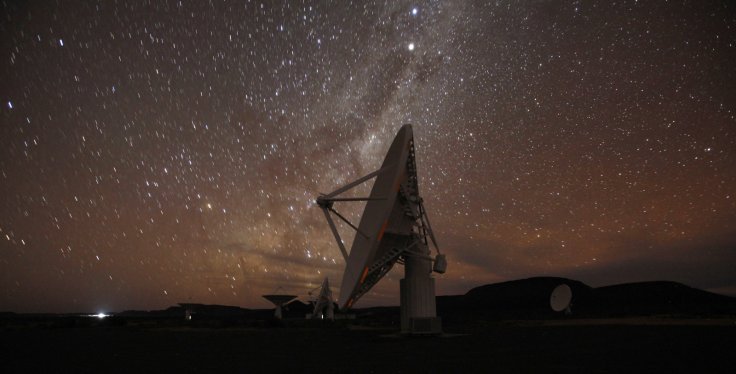
Even though many scientists and experts, who are in the field of space business warned about the use of Artificial intelligence several times, a group of scientists have used AI to uncover 72 previously undiscovered mysterious signals, called as fast radio bursts (FRBs) that travel billions of light years through space.
Breakthrough Listen project, which is a science-based program to search for intelligent extraterrestrial communications, has reported these quick-fire signals. While the origins of these signals are unknown, scientists have speculated that some of them come from neutron stars, which is situated near black holes, interstellar clouds or nebulas. As per some experts, these mysterious signals might be a sign of alien life. Scientists stated that one particular signal, FRB 121102, has detected more than once.
Researchers involved with Breakthrough Listen have used world's largest fully steerable radio telescope, the Green Bank Telescope in West Virginia to probe the repeating FRB in August 2017. Initially, on the basis of collected data, which was gathered over five-hour, Vishal Gajjar, of UC Berkeley and his team found 21 bursts from a galaxy, which is three billion years away.
Now, the scientists have developed a machine learning algorithm, which is a tech that actually useful to optimize search engines and sort through images. This tool has pried dozens more FRBs from the same dataset. Gerry Zhang, a UC Berkeley doctoral student and his colleagues' neural network-based algorithm sifted through about 400 terabytes of data to reveal the additional FRBs.
While both research papers by Zhang and Gajjar has been accepted for publication in The Astrophysical Journal, the new results from these projects have suggested that these mysterious bursts aren't received in a regular pattern and such information will help scientists to narrow down possible explanations for FRB sources.
In a Breakthrough Listen statement, Zhang said that this is just the beginning of using these powerful methods to find out radio transits and "we hope our success may inspire other serious endeavours in applying machine learning to radio astronomy."
Andrew Siemion, who is Search for Extraterrestrial Intelligence (SETI) Research Center Director and Breakthrough Listen Principal Investigator stated that Zhang's work "is exciting not just because it helps us understand the dynamic behaviour of FRBs in more detail, but also because of the promise it shows for using machine learning to detect signals missed by classical algorithms."
It should be known that recently scientists have started using the Canadian Hydrogen Intensity Mapping Experiment (CHIME) to search the skies for FRBs and they hope the telescope will improve the number of such mysterious flashes spotted travelling through space.
However many experts have claimed that it is possible that these signals do not indicate towards the existence of extraterrestrial intelligence in the universe. Previously Newsweek reported that Gajjar didn't think that these signals were coming from distant alien civilizations because the bursts "occur all over the sky and show similar properties." He added that if those entities really wanted to get in touch with the humans, they might have modified those signals like FRBs to communicate their artificial nature.
It should be noted that scientists have created a special Richter-like scale like tool to detect extraterrestrial signals which would prove whether someone from outer space is really trying to contact humans or not. The new scale is an upgraded version of the existing Rio scale, which is already used by alien hunters, but the new scale, called Rio 2.0, assigns scores to the signals detected by Search for Extraterrestrial Intelligence (SETI).









